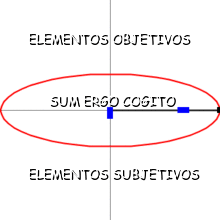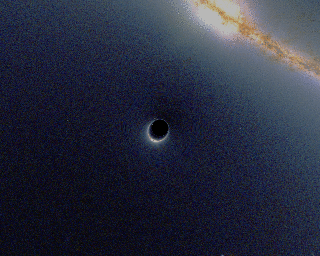Saturday, September 5, 2009
NADIE TIENE LA VERDAD?, MENTIRA: LA VERDAD EXISTE
Uno, al levantarse por la man~ana, hace su cafelito y abre el cacharro com-puta-dor para "saber lo que pasa en el mundo".
"Saber lo que pasa en el mundo".
Que frasesita mas globalmente abstracta y ambigua; porque, en relidad, lo que vamos a ver es "lo que se ha impedido que pase en el mundo", que es, por Negacion dialectica , la mejor manera de enterarse de lo que verdaderamente pasa en el mundo...aunque para ello, ojo avizor, tenganos que leer 'entre lineas'.
Y empiezo con el periodico 'Granma'.
Por que?
Muy sencillo.
Porque los periodicos y noticias del orbe capitalista no son tan honestos y sinceros como 'Granma', es decir: los periodicos e informatica burguesa no se autodefinen como lo que son: "organos del partido capitalista",
pero 'Granma', si, es autentico, dice que es el "organo del partido comunista cubano".
Asi quedan las cosas claras.
Y aqui esta ya la bifurcacion que tomo de entrada:
preferimos la transparencia en lugar de la hipocresia fraguada.
Y asi entramos en 'Granma'.
Hoy nos hemos encontrado algo interesante .
Se trata, nada mas y nada menos, que del Presidente de la Asamblea General de las Naciones Unidas, el Padre Miguel D´Escoto, al cual, a pesar de que ocupa el mas alto puesto en la organizacion internacional mas inportante del mundo, los medios (y fines) periodisticos de comunicacion e informacion de la 'free press' (puestos todos de acuerdo), lo ignoran completamente. Y hoy, al abrir 'Granma', hemos corroborado lo que ya sabiamos del por que tan radical e inquisitorialmente lo repudian y lo omiten (es mas, lo odian).
Por esto:
"Mi encuentro con Fidel Castro fue un regalo de Dios",
declaro
"Las oraciones de todos los revolucionarios del mundo Dios las ha escuchado",
al referirse a la recuperación de Fidel Castro.
"He sido el más viejo en asumir ese cargo, aun con una situación de salud delicada, pero lo hice en nombre de los pobres de la tierra, para lo cual Fidel es el ejemplo guía para todos,
manifesto
"La ideología capitalista es la más seria adversaria en la historia en contra del mensaje de Jesucristo...Te dice "ser más es tener más", Jesús te dice ser más es tener el corazón más grande para poder dar más",
sentenció
Y llamó a luchar para pasar de la lógica del Yo y lo Mío a la lógica del Nosotros y de lo Nuestro, que, según dijo, es la que se vive en Cuba y de la cual Fidel es el principal impulsor.
Ahora entendemos perfectamente el por que el Presidente del mas alto organismo internacional del planeta es tan descaradamente omitido e ignorado por las 'Noticias' burguesas:
Porque la verdad molesta
-"Nadie tiene la verdad"-,
nos dicen...los mismos que la silencian
Es mentira.
La prueba esta en el significativo hecho de amordazar a quien la lleva: el Padre Miguel D´Escoto
EL LIBRO TIBETANO SOBRE LA MUERTE
The Tibetan After-Life
The Bardo Thodel - The "Tibetan Book Of The Dead"
Like the Egyptians, the Tibetans had their "books of the dead", which were not only guidebooks for the deceased, but also magnificent spiritual writings.
The Bardo Thodel, or "Book of the Intermediate State" (popularly but inaccurately known in the West as "The Tibetan Book of the Dead") is widely and traditionally attributed to Padmasambhava, the legendary Indian Tantric master who was said to have introduced Buddhism to Tibet in the middle of the eighth century, conquering and converting all the native demons and deities in the process.
In actual fact, compilation of the Tibetan Books of the Dead involved a number of authors, working over several generations. The present corpus, of which the popular "Tibetan Book of the Dead" is only the best known and most accessible of a large number of writings (mostly mantric and magical), dates from the 14th or 15th centuries [Detlef Ingo Lauf, Secret Doctrines of the Tibetan Books of the Dead, pp3-4, (Shambhala, Boulder, 1977)].
It is obvious that the genuine occult knowledge in the Bardo Thodel has been obscured by Buddhist Tantric iconography and symbolism: the appearance of the various Buddhas, their precise iconographic attributes, and so on. This is not to depreciate the profound knowledge of Tibetan Buddhism, but only to regret that two valid fields of knowledge could not have been retained in separate purity, rather than being mixed in an unfortunate jumble.
The Bardo-States
Central to the Tibetan concept of after-life existence is the Bardo. The word means literally "intermediate state". According to Tibetan esotericists, steeped as they are in Buddhist learning,
all existence is nothing but a series of alternating transitional states, or "bardos".
Waking, sleeping, meditating, dying, wandering in the spirt world, reincarnating; all these are bardos.
Generally however, the term is used to designate the period from physical death to physical rebirth.
And, just as waking existence can be divided into bardos (such as waking and sleeping), so can the afterlife existence.
Basically then, the Bardo Thodel describes a distinct sequence of states (bardos) through which the individual passes through between death and rebirth. There are three distinct stages, which are as follows:
(1) The Chikai Bardo (or hChi-kha Bar-do - a number of Tibetan letters are silent) or Intermediate period of the moment of death.
This includes the process of dying; and the dissolution of the elements (earth, water, fire, and air) that make up the physical body.
During this period one experiences the "Clear Light", one's own innate Buddha-nature. This is therefore a very favourable moment for the attainment of Enlightenment and liberation from the wheel of rebirth.
The Tibetan account of the Chikai Bardo shows striking parallels with the so-called "Near Death Experience" of people who have died, experienced themselves floating out of their bodies, and so on, and then been revived.
(2) The Chonyid Bardo (or Chos-nidd Bar-do) or Intermediate period of visions of deities.
This refers to the state where one experiences visions of deities, Heaven and Hell, Judgment, and so on. Modern writers have been struck by the parallels with the psychedelic and psychotic states, and experiences of "astral travelling" and the "astral plane"
(3) The Sidpa Bardo (or Srid-pa'i Bar-do) or Inter-mediate period of rebirth.
During this bardo the consciousness descends and chooses a new body to be born into. (Buddhists do not accept the existence of a single continuing entity which "reincarnates", and refer instead to the "rebirth" of the consciousness-stream in a new body).
The number of days given in the Tibetan Book of the Dead - 49 - is obviously symbolic, although the Tibetans themselves, like all people (including Westerners) who are immersed in a particular religious tradition, take it in a literal context.
Now, it is interesting to compare the Tibetan with the Egyptian, Taoist, and Kabbalistic conceptions. The latter three speak of the personality or soul as compound, and separating into its component parts with physical death; each part going to its own world or fate.
The Tibetans only have a single soul - "consciousness" would be a better word, in view of the Buddhist denial of a single persisting entity that could be termed "soul" or "self" - but have this principle passing through a number of different experiences.
In other words, the Egyptians, Taoists, etc speak of a plurality in the being, but not in time, the Tibetans of a plurality in time, but not in the being.
Of course, this is putting it rather simplistically, since the Egyptians did have a "Judgment" just as the Tibetans did, and in both cases this is a temporal stage one has to pass through. But basically the above generalisation holds good.
Tibetan and Hellenistic conceptions - contrasts
The psychologist Carl Jung, in his "psychological commentary" to the Evans-Wentz edition (the first English translation) of the Tibetan Book of the Dead, has observed that in this text, unlike the corresponding Western position, the sequence of states begins with the highest, the Clear Light (representing the Absolute Reality or Dharmakaya), since the moment of death is considered the highest state of consciousness.
The conscious-ness then becomes progressively degraded, finally resulting in a new physical birth. What we have, as Jung points out, is an initiation process in reverse, describing the descent of the soul into the body, rather than, as in Christian eschatology, the ascent of the soul to God [Carl Jung, "Psychological Commentary", in W.Y. Evans-Wentz, The Tibetan Book of the Dead, p.xlix (Oxford University Press, 1960].
It seems then that the Tibetan and the Platonic-Chaldean-Mithraic Hellenistic conceptions of after-life existence are the inverse of each other.
Both speak of consciousness progressing through successive stages, but for the Tibetans this is in the form of a descent from the highest state of consciousness, the Clear Light or Dharmakaya, which is experienced at the moment of death (Chikai bardo), through the Secondary Clear Light, the Peaceful Deities, Knowledge-holding and then Wrathful Deities (Chonyid bardo), the various unpleasant psychic experiences, such as the Judgment, and finally the Choosing of a body (Sidpa bardo) in preparation for Rebirth.
In contrast, in the Platonic-Chaldean-Mithraic schema, physical existence is the lowest state of existence, and one has to painfully fight one's way up through the various successive psychic spheres or zones, until finally one attains the Celestial or Supra-celestial paradise among, or above, the Fixed Stars.
Thus the goal of the Hellenistic after-life is equivalent to the initial state of the Tibetan after-life; and the final state of the Tibetan bardo equivalent to the initial state of the Hellenistic conception: the proximity with the physical body.
The Tibetan guidance to the dead is primarily yogic; one has to realise this initial Clear Light as one's own True Nature, and by so doing merge with it, thus attaining salvation. Failing this, one steadily slips lower and lower. The Hellenistic, especially the Mithraic and the Gnostic, guidance is Magical: one uses specific "pass-words" to get past the Guardians at each psycho-celestial zone or sphere. Succeeding in this, one slowly ascends higher and higher.
(Se podria interpretar esto como un simbolismo extrapolado de la existencia donde, tomando ahora el mito biblico del Genesis donde el 'Arbol de la Vida' --la puerta a cruzar para recuperar la armonia que perdimos al ser arrojados del Eden-- esta custodiado por dos arcangeles --"guardians"-- con espadas de fuego, que, en este caso, podrian 'atendernos' --dejarnos pasar-- al usar el codigo de esas contrasen~as --"pass-words"?--)
Subscribe to:
Comments (Atom)
Blog Archive
- ► 2010 (272)
- ► 2011 (344)
- ► 2012 (355)
- ► 2013 (352)
- ► 2014 (502)
- ► 2015 (416)
- ► 2016 (335)
- ► 2017 (331)
- ► 2018 (296)
- ► 2019 (298)
- ► 2020 (358)
- ► 2021 (359)
- ► 2022 (406)
- ► 2023 (311)
- ► 2024 (251)











































































































































































































































































































































































































































